Tarquinius Priscus' Period
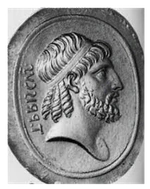
Key Political Traits:
Centralization of authority:
Strengthened royal power and influence over institutions.
Military focus:
Expanded Roman territory through campaigns against Latins, Sabines, and other neighboring peoples.
Urban development:
Initiated large infrastructure projects (city walls, roads, drainage systems).
Religious integration:
Used religious authority to consolidate political power.
Institutional innovation:
Reorganized Senate and citizen assemblies, laying foundations for Roman civic structure.
Political Institutions
The Monarchy
King (Rex):
Supreme political authority; commander-in-chief of the army.
Religious leader, presiding over sacrifices and ceremonies.
Could appoint magistrates and officials.
Controlled administration and justice.
Imperium:
Legal power to command, including over life and death in some cases; conferred by the Comitia Curiata.
The Senate
Composed mainly of patricians (aristocratic families).
Functioned as an advisory council to the king.
During Tarquinius’ reign:
The Senate’s role expanded in administrative and military oversight.
Helped organize public works and manage finances.
Comitia Curiata
Assembly of Roman citizens divided into curiae (clan-based units).
Functions:
Formally conferred imperium to the king.
Ratified some decisions; largely symbolic in power.
Tarquinius strengthened the assembly’s formal role but ensured ultimate authority remained with the king.
Other Offices / Magistracies
Lictors:
Bodyguards and attendants of the king; carried fasces as a symbol of authority.
Censors (precursor):
Early oversight of citizens’ wealth, property, and class status for taxation and military organization.
Military commanders and tribunes:
Appointed by the king to organize army units.
Polis Management
Built Cloaca Maxima (major sewer system) to drain marshes.
Expanded city walls, increasing defense capabilities.
Constructed Circus Maximus, the first major public space for games and civic events.
Promoted temples and religious sites, strengthening religious legitimacy.
Military Organization
Structured the army by curiae and tribes, formalizing early military hierarchy.
Expanded Rome’s influence through campaigns against Latins, Sabines, and neighboring towns.
Administrative Oversight
Strengthened coordination between Senate, king, and assemblies.
Began early forms of bureaucratic management, largely under patrician supervision.
Democracy
Rome was not democratic under Tarquinius Priscus.
Citizen assemblies existed (Comitia Curiata) but were largely ceremonial:
- Endorsed king’s decrees.
- Ratified appointments and legal acts.
Power structure:
- Patricians dominated political life.
- Plebeians had very limited participation, mainly military service and tax obligations.
Early Roman “democracy” was rudimentary:
- more symbolic than functional, with real power centralized in monarchy and aristocracy.
Tarquinius Priscus – Reforms
Political and Institutional Reforms
Expansion of the Senate
Increased the number of senators from 100 (under Romulus and early kings) to 200.
Opened Senate seats to sons of minor or non-senatorial patricians, widening aristocratic base.
Strengthened Senate’s advisory role to the king.
Reorganization of the Citizen Assembly
Comitia Curiata maintained but formalized king’s imperium approval process.
Created greater involvement of curiae in military and civic organization (still limited power).
Creation of Lictors
Lictors acted as attendants and guards of the king, symbolizing imperium.
Military Organization
Reorganized the army along curiae and early tribal lines.
Appointed military tribunes to assist in command.
Urban and Infrastructure Reforms
Cloaca Maxima:
Major sewer system to drain the Forum and surrounding areas.
City Walls:
Expansion and fortification of Rome.
Circus Maximus:
Construction of first major public space for chariot races and games.
Temples:
Temple of Jupiter on the Capitoline Hill, reinforcing religious authority.
Economic Reforms
Public Works and Employment
Large-scale construction projects created jobs and stimulated local trade.
Increased demand for stone, timber, and labor, integrating local economies.
Trade and External Relations
Tarquinius promoted trade with neighboring Latins, Etruscans, and Sabines.
Strengthened economic ties via diplomacy and military campaigns.
Land Management
Controlled allocation of public lands (ager publicus).
Encouraged settlement of conquered territories, increasing agricultural output.
Revenue Organization
Likely strengthened taxation or tribute collection from conquered towns.
Early forms of state-managed finances to fund military and urban projects.
Monetary Development: Greece vs. Rome (~7th–6th century BCE)
| Aspect | Greek Poleis | Rome (Tarquinius Priscus – Servius Tullius) |
|---|---|---|
| Money | Coinage already in circulation (Lydia → Greek cities c. 6th c. BCE). Used standardized silver and electrum coins. Enabled complex trade, credit, and accounting. | No coinage yet. Trade relied on barter, weighted bronze (aes rude), or metal ingots. No formal exchange rules. |
| Markets | Agora: structured marketplace for goods, slaves, crafts, and services. Auctions and contracts possible. | Forum: mainly political and social center. Exchange informal, local, mostly in-kind or metal-weight transactions. |
| Accounting / Trade Algorithms | Early accounting methods existed: weighing coins, standard prices, contracts, even primitive credit arrangements. | No formalized symbolic exchange system. Value determined ad hoc (weight/quality of bronze), no contracts with guaranteed “checks” or promissory instruments. |
| Economic Integration | Mediterranean-wide trade, colonies, inter-polis commerce. Prices somewhat standardized. | Local and regional trade (Latins, Etruscans), mostly subsistence/agricultural. Rome not integrated into broader trade networks yet. |
Currency
No minted coins yet in Rome (~616–579 BCE).
Economy largely barter-based, supplemented by weighted metal exchange:
Bronze, iron, or aes rude (rough lumps of bronze) used for trade.
These metal pieces functioned as tools of value for transactions.
Trade tools:
Bronze and other metals were cut or weighed for exchanges.
Value determined by weight and quality rather than official stamp.
Use of Monetary Tools
Trade and Commerce
Metals allowed easier exchange than pure barter.
Used in local markets and settlements, especially in Ostia (under Ancus) and during Tarquinius’ urban projects.
State Projects
Public works like Cloaca Maxima, city walls, and temples required labor and materials.
Payment was often in kind or weighted metals, facilitating employment and trade.
Military
Soldiers and mercenaries could be paid in metal lumps or goods.
Tribute from conquered towns often accepted in metal or agricultural produce.
Taxation under Tarquinius Priscus
Tribute and Taxes
Rome collected tribute from conquered territories:
Latins, Sabines, and other towns paid goods, metal, or livestock.
Citizens in Rome paid taxes or labor contributions for public works:
Labor service (corvée) for roads, drainage, or military projects.
Occasional contributions of metal for state projects.
Early Taxation Mechanisms
Census-based organization
Citizens were assessed by property and social class.
Wealthier patricians contributed more in taxes or military equipment.
Tribute from allies
Neighboring towns supplied materials, soldiers, or metals.
Tarquinius may have systematized collection, improving efficiency.
Economic Function of Taxes
Funded public works, religious institutions, and military campaigns.
Redistributed resources to strengthen the king’s authority and urban development.
Created a proto-state economy: centralized collection and allocation of resources.
Tarquinius Priscus’ reign (~616–579 BCE), evidence for formal public markets (“fora” in the sense of structured auctions or trading centers for slaves, horses, ships, and lands) is extremely limited. Let’s clarify this carefully:
Slaves
Trade of slaves existed in early Rome, but mostly informally.
Likely sourced from:
- Prisoners of war (Latins, Sabines, Etruscans).
- Debt bondage among Romans.
Public slave markets (like later Rome’s macellum or forum venalium) did not yet exist. Transactions were probably conducted directly among elites or at the king’s discretion, often as part of distribution after conquest.
Horses
Horses were high-value military and transport assets.
Trade likely limited to elite households, cavalry owners, and the state.
No archaeological or textual evidence indicates a formal marketplace for horses at this early period.
Boats / Shipping
Ancus Marcius had already built Ostia, the first port at the Tiber mouth.
Tarquinius likely used the port for trade with neighboring communities (Latins, Etruscans), but commercial shipping was state-directed or negotiated among elites.
No public docks or trading posts for private boat sales have been documented for this time.
Land
Land (ager publicus) from conquered territories was allocated by the king.
Patricians and Roman elites received plots; plebeians had limited access.
Land sales and public auctions as a regular civic practice did not exist; distribution was largely political and military in nature.
The overview helps us introduce the period and leads us to the understanding that social evolution had not yet established steadily developed trading tools, and scarcely would the Romans of that time have understood us if we asked them about such things as, 'Where will the auction of the horses be this week?' or declared for some deal a phrase like: 'As a warranty of the contract’s completion I set the signed cheque…'
Introduction to Early Rome: The Seven Kings
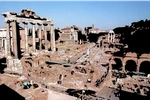
Romul, the First King of Rome
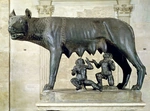
Numa Pompilius, Second King of Rome

Tullus Hostilius, Third King of Rome
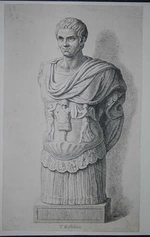
Ancus Marcius, the Fourth King of Rome
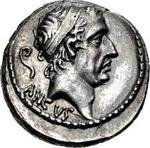
Tarquinius Superbus, the Last King of Rome
